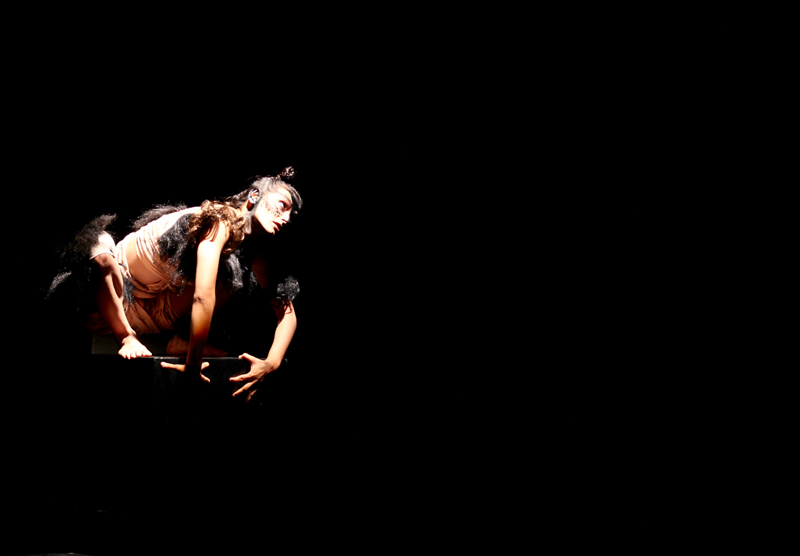Deepika Arwind





Grant Period: Over five months
This grant enables Deepika to create a performance piece themed around narratives of the hair. Titled ‘A Brief History of Your Hair’, the performance draws upon historical, political and gender narratives of the hair to unpack questions of identity, androgyny, gendered beauty and the way these ideas relate to each other across cultures.
This project has its genesis in Deepika’s memories of growing up in a Sikh household. She remembers her mother’s ‘silky, mehendi-glazed hair’; her father’s ‘springy long locks’; and her own long plaited hair that ran lower than her hips. As a child, she would often use her own plait as a moustache while playing the ‘husband’ in childhood games. On other days, as her parents took their siesta, she would put a bun on her mother’s head and plait her father’s hair.
As Deepika took these ideas further, she was able to explore the gender, history and politics of hair in a much larger context outside of the personal. The historical, cultural and mythical material around hair is endless. The way it represents spirituality in various cultures, the transcendental quality it acquires in sacrifice, its place as a symbol of pride, the lack of it symbolising austerity or loss - are some of the ideas that Deepika is inspired by. She started by collecting several stories and images from different Sikh families, including her own, about hair and its effect on their daily lives. From the cutting of hair during the 1984 riots to an image of a Sikh man tying the turban as his last step into inhabiting his identity - the references are all to the male Sikh identity vis-a-vis hair. But the question that kept coming back to her was what happens to the identity of a Sikh woman who also keeps the hair?
Therefore, the gendering of hair and its associated gendered practices are also narratives that have deeply fascinated Deepika. ‘Much of the literature, poetry and film around hair have to do with women. There is a fundamental pressure in all cultures spanning the East and the West regarding notions of beauty and therefore the hair’, she says in her proposal. Women deal not just with the hair on their head but also on their bodies, constantly looking at ‘hairless, smooth skin’ as beautiful. All these feed into the beauty myth and the male gaze, therefore making the abundance of hair or its lack, both political and a sign of comfort with one’s own body.
In July 2015, Deepika received a small grant from the Goethe-Institut to create a performance for a project called ‘Gender-Bender’. With this grant, she created a 15-minute work-in-progress performance that looked at hair as a marker of gender. Created with two movement artists, the performance won much critical acclaim.
The IFA grant now enables Deepika to take the explorations further towards creating a larger performance piece. She imagines this piece with bodies that are largely de-historicised, un-gendered and de-politicised so that each performer inhabits the world of fantastical stories with fresh impulses, and therefore acquires gender, character traits, or body politics on stage, as they perform the piece. Deepika is currently working with a cast of two female and two male actors. Although much of the triggers and impulses for performance-making come from Deepika’s own ideas of history, politics and gender, the actors also bring in their personal materials, all of which is then used in their bodies and in the weaving of tales. In doing this, Deepika wishes to extrapolate the personal and the political to fictional stories so that they can create a universe of expression, replete with bizarre, oversized props and magical transformations. The attempt is that these stories find emotional responses with the spectator with humour and playfulness in the narratives.
Deepika will direct the piece herself, but at some point, she also would like to bring in another director and a dramaturge. She will collaborate with a sound artist to create an original soundscape for the play. Part of the experiment will also be to use projected text. ‘I am very curious and interested in how my pursuit of storytelling can be enhanced with text that is visually received by the audience’, she says. So the performance will have dialogues that are not spoken by the actors but are rather read by the audience. The text will be projected on the body of the actor to see how it interacts with a moving performer.
An expert in theatre strongly recommended the grant noting, ‘In a certain way this project attempts to recast the debate by widening the frame of reference to include the meaning not just of woman's hair but also of men's hair, of body hair and treatment of hair over the life cycle. The performance from what I gather from the project is an endeavor to explore how deeply sexual, religious and political meanings of hair are interlinked in society and how the issue of hair reinforces traditional gender definitions. What is interesting in this project is to understand the meaning of a woman's hair in relation to men’s hair; hair on the head in relation to body hair; and the different practices related to hair. The project is very exciting and seems to be entering into an unexplored terrain’.
Two work-in-progress presentations for an invited audience are planned in December and February. The performance is scheduled to premiere in March 2016.
Still and video recordings of the rehearsals and the performance, along with press clippings if any, will be deliverables to IFA from this project.
